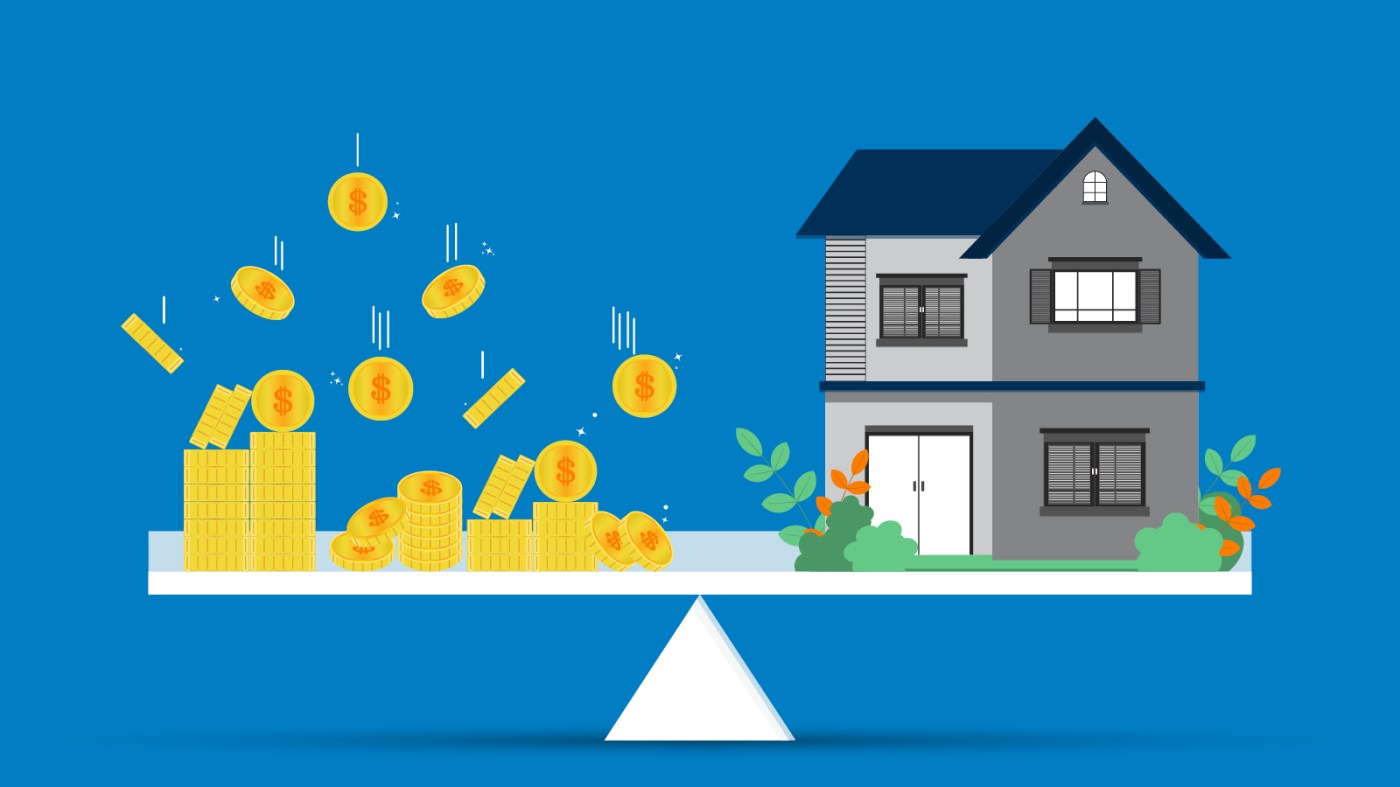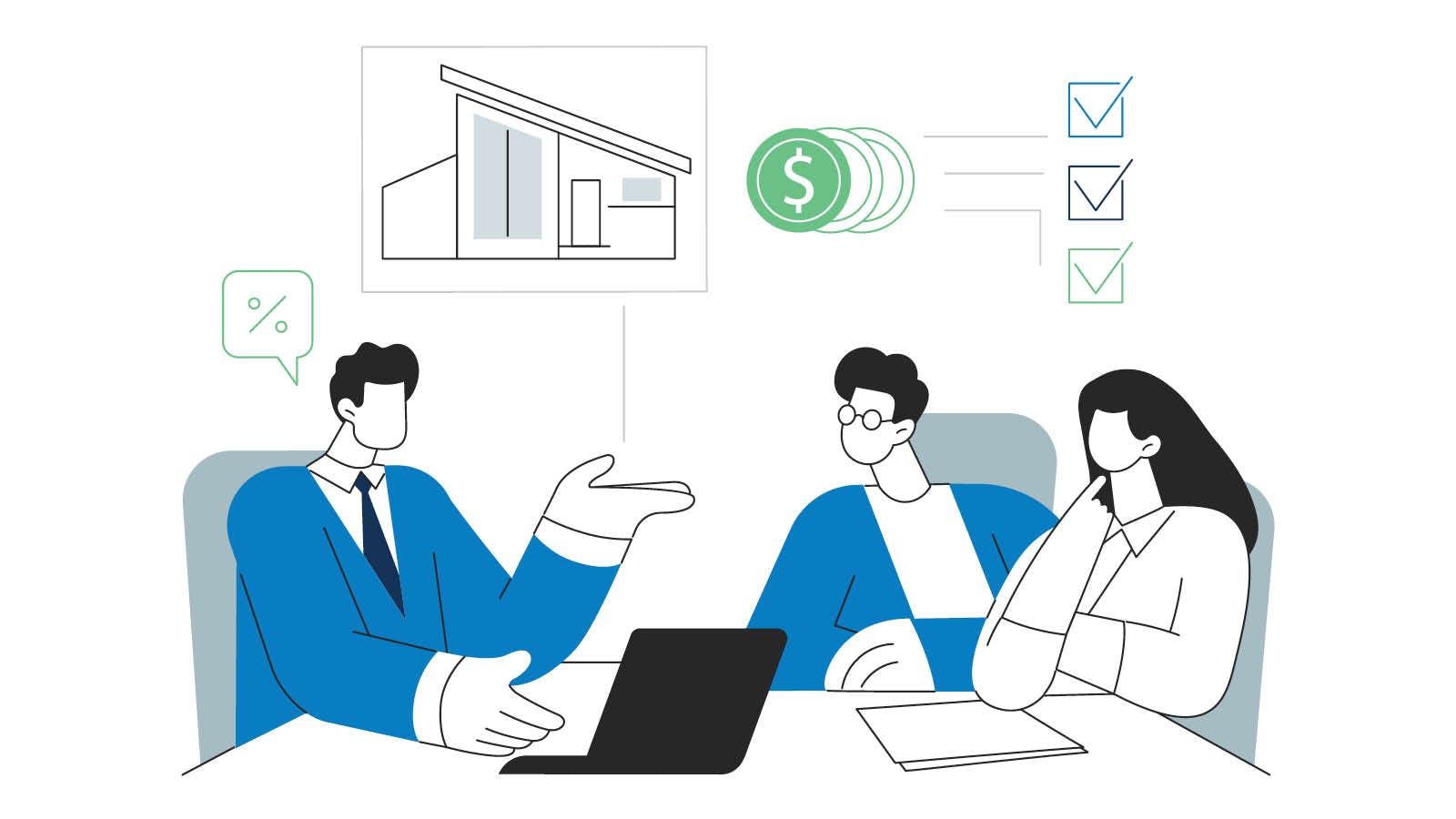The average U.S homeowner has around $313,000 in home equity.
But hey, what is home equity anyway?
How do you calculate it?
What should you do with it?
And who can help you determine how to pull equity out of your home?
The reality is that home equity can be a pretty powerful tool — if used wisely.
Clarifying Home Equity
First things first: What even is home equity?
Home equity: The difference between your home’s market value and the amount you owe.
Imagine you sold your home today. You’d first need to pay off the rest of your mortgage with the proceeds. Then, the amount left over would be the cash you receive in the amount of your equity.
It’s essentially the portion of your home that you, versus the lender, own.
Equity tends to grow over time. That’s because, as you make mortgage payments, you cut down the amount you owe. Properties also tend to appreciate, or rise in value, over time. Both factors can mean increased equity.
Home equity is a form of wealth, but it’s not the same as liquid cash. It represents a kind of hypothetical value, because you’d need to take some kind of action — more on that later — to access it.
Understanding How to Calculate Home Equity
Now that we’re clear on definitions, let’s work to determine exactly how much home equity you currently have.
Start with your home’s current market value. You can use an online home value estimator for a rough number, but keep in mind that they’re not the most reliable. There’s a chance they’ll overestimate to boost your ego. So, a certified appraiser will always be the most reliable source here.
Then, determine your current mortgage balance. You’ll probably find this figure on your monthly mortgage statement or online account. If you’re having trouble locating it, you can also contact your lender.
With both figures on hand, subtract your current mortgage balance from your home’s current market value.
So, if your home is worth $750,000 and you have $525,000 left on your mortgage, you’d have $225,000 in home equity.
Deciding What to Do with Home Equity
So, with your home equity in mind, what would you like to do with it?
Some homeowners choose to stay the course and just keep building equity. Maybe it gives them a greater sense of financial security, they’d like a larger profit upon selling, or they’re hoping to drop private mortgage insurance (PMI) — which is typically possible when your equity reaches 20% of the home’s original value. This is one approach to using equity wisely.
Others choose to pull out their home equity. Reasons can include consolidating debt, funding home improvements or renovations, covering emergency expenses or even big-ticket purchases, or achieving other life goals like launching a business. If you’re strategic and responsible, this is another great use of home equity.
If you think you might like to cash in on some of your home equity, there are a few questions you should ask yourself:
-
What are my personal financial goals? What’s the best way to meet them?
-
Do I need cash now, or later?
-
Am I financially stable enough to take on a new loan or line of credit? (This will be a requirement for some methods of pulling home equity.)
No matter the answers, it’s always a good idea to discuss your options with an experienced mortgage professional. They can help you assess equity, review borrowing options, and uncover potential long-term implications.
Deciding How to Pull Equity Out of Your Home
Now, how to pull equity out of your home. If you’ve decided this is the right option for you, there are a few key options to consider.
Home Equity Loan
A home equity loan is a second loan you take out, in addition to your mortgage. It allows you to borrow a lump sum, based on your equity. It comes with regular, predictable payments that go toward both the principal and interest.
A home equity loan might be a wise choice if you’d like to access cash without replacing your mortgage.
Home Equity Line of Credit (HELOC)
A home equity line of credit, or a HELOC, allows you to borrow money as needed, up to a pre-approved limit, based on your equity. Homeowners can withdraw funds during a set draw period, which typically spans 5-10 years. Then, you’ll enter a repayment period, where you pay the lender back the principal plus interest.
HELOCs can be beneficial if you need ongoing access to funds. Like, say, completing a large-scale renovation or paying school tuition.
Cash-Out Refinance
With a cash-out refinance, you replace your existing mortgage with a new, often larger mortgage. The difference between your old and new mortgage is paid out in cash. Then, you make regular monthly payments on just the new loan.
A cash-out refinance might be a good idea if you need a lump sum of cash and can manage taking on a new loan. Use cases can range from paying down high-interest debt to purchasing an investment property.
Reverse Mortgage
A reverse mortgage is a loan option, typically for homeowners 62 years and older, that allows them to convert part of their home equity into cash. The lender pays in a lump sum, via monthly payments, or through a line of credit. Then, the loan is repaid when the home is sold or when the borrower moves out permanently.
Because reverse mortgages are generally for older borrowers, they might be used to supplement retirement income or delay Social Security benefits. But there are plenty of responsible uses that might apply.
Again, it’s critical that you speak with a home finance professional when determining how to pull equity out of your home.
Wrapping Up: Using Your Home Equity
Home equity is a powerful asset. But it needs to be used with purpose and care.
And, at the end of the day, using it wisely means different things to different people.
That’s why it’s so essential that you develop an understanding of home equity, carefully calculate your own, and seek guidance in determining how to pull equity out of your home.
So, you can weigh options and find the best path forward for your unique household.
Published on August 19, 2025


